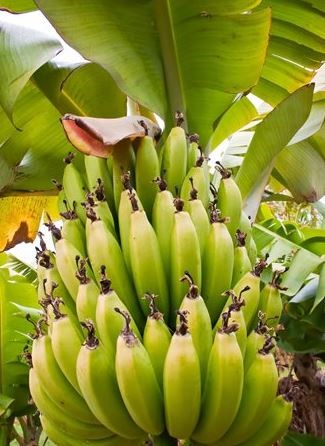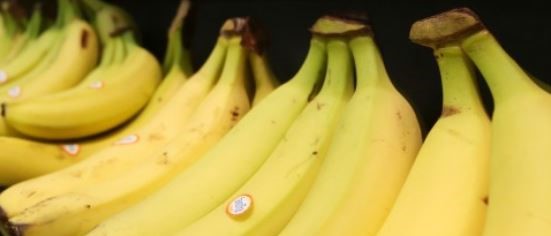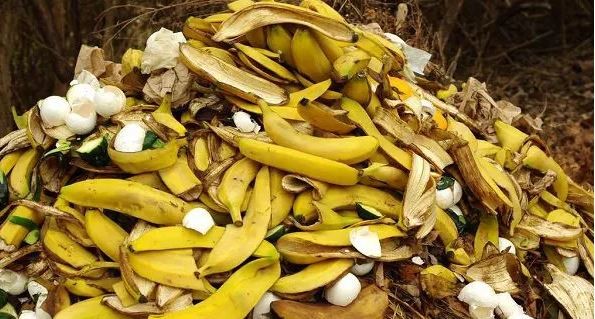WHY DO BANANAS REQUIRE SO MANY PESTICIDES?

Bananas are the most popular fruit in the world. About 115 million tons of bananas are consumed each year, produced in more than 100 countries. Americans eat more bananas than any other fruit, consuming 6.4 billion bananas a year on its own, with every American each eating an average of 10 pounds per year. It is widely believed that there are more than 1,000 types of bananas in the world. The one most frequently produced for export markets is the Cavendish.
The Cavendish banana, consumed more frequently than apples and oranges by Americans, is being threatened by the virulent fungal Panama Disease, also known as Tropical Race 4, which is making its way to South America where more than 80 percent of the world’s bananas are grown.
And with no known way to stop the disease — or even contain it — scientists say that over time, this type of banana may be eliminated from commercial production.
Not to fear. Scientists in Honduras are working to create a resistant banana before the disease hits Latin America, where the majority of bananas are grown.
The burden of supplying the global banana hunger falls on countries in the tropics, including Costa Rica, India, Brazil, Ecuador, Guatemala, Honduras, Columbia and more. Although these countries have excellent climates for growing bananas, they also breed a variety of pests and fungi that can wreak havoc on this popular crop.
Did You Know that Bananas aren’t really a fruit?
Bananas are both a fruit and not a fruit. While the banana plant is colloquially called a banana tree, it’s actually an herb distantly related to ginger, since the plant has a succulent tree stem, instead of a wood one.
The yellow thing you peel and eat is, in fact, a fruit because it contains the seeds of the plant. Although since bananas have been commercially grown, the plants are sterile, and the seeds have gradually been reduced to little specs.
The banana fruits develop from the banana heart, in a large hanging cluster, made up of tiers (called "hands"), with up to 20 fruit to a tier. The hanging cluster is known as a bunch, comprising 3–20 tiers, or commercially as a "banana stem", and can weigh 30–50 kilograms (66–110 lb). Individual banana fruits (commonly known as a banana or "finger") average 125 grams (0.276 lb), of which approximately 75% is water and 25% dry matter.
The fruit has been described as a "leathery berry".[19] There is a protective outer layer (a peel or skin) with numerous long, thin strings (the phloem bundles), which run lengthwise between the skin and the edible inner portion. The inner part of the common yellow dessert variety can be split lengthwise into three sections that correspond to the inner portions of the three carpels by manually deforming the unopened fruit. In cultivated varieties, the seeds are diminished nearly to non-existence; their remnants are tiny black specks in the interior of the fruit.
The chief of sustainable agriculture for the non-profit organization Rainforest Alliance Chris Willie talked to NPR's All Things Considered about how the climate presents a variety of dangers to banana harvesting. He explained that the warm, humid, remote plantations are prone to the growth of an airborne fungus called Black Sigotoka. This growth can destroy an entire plantation in about a week – a costly problem for this profitable fruit.
Burrowing and spiral Nematodes, popularly known as roundworms, Worms, fruit-hungry insects, banana aphids, banana weevils, spiders and tree diseases are also common problems in banana plantations, Willie told NPR. To combat these risk factors, most banana farmers and fruit companies turn to a cocktail of pesticides that can help reduce the damage from each of the banana's many enemies. Examine some the most common pesticides used on banana plantations to understand the industry better, whether as a researcher or consumer.

- Chlorpyrifos – An insecticide, acaricide and miticide, chlorpyrifos is an organophosphate used on many crops throughout the world. Although formerly used as a household insecticide, the Environmental Protection Agency has placed many restrictions on the product, which has been found to have negative effects on those who use the chemical compound. Chlorpyrifos, chemically written as C9H11Cl3NO3PS, has been in use for more than 40 years and is seen by some as a smart alternative to pesticides that kill beneficial insects.
- Thiabendazole – Thiabendazole, also known as the medications Mintezol and Tresaderm, is a fungicide and parasiticide that is used on banana planatations. Its chemical formula is C10H7N3S. Thiabendazole is the most common pesticide residue found in bananas, occuring in 48.1 percent of the bananas tested, according to the Pesticide Action Network North America. Although banana farmers use particularly high amounts of pesticides, with the Environmental Working Group putting the number at 35 pounds per acre, the residues aside from thiabendazole are particularly low because the banana peel protects the edible portion from many chemicals.
- Azoxystrobin – Azoxystrobin is also a fungicide, used for a variety of produce farming. Known by commercial names including Amistar and Heritage, azoxystrobin is effective against multiple fungi such as powdery mildew, late blight, apple scab and rusts. Absorbed through the banana tree's roots it moves through the leaves to keep fungus at bay. Referred to as Methyl (E)-2-{2-[6-(2-cyanophenoxy) pyrimidin-4-yloxy]phenyl}-3-methoxyacrylate), azoxystrobin has a low toxicity to most avian, aquatic and terrestrial animals.
- Imidacloprid – Imidacloprid is a neonicotinoid, which acts as a neurotoxic insecticide. This chemical compound, 1-(6-chloro-3-pyridylmethyl)-N-nitroimidazolidin-2-ylideneamine, can be used as a seed treatment or applied topically, and is effective against soil, chewing and sucking insects, according to the National Pesticide Information Centre, a joint body between the EPA and Oregon State University.
Complications of pesticides in banana plantations
Although most growers see pesticide use as critical to the success of banana farming, critics point to the detrimental effects that these chemical compounds have had on animals near the plantations, such as crocodiles in Costa Rica. Fish have died in large numbers as well, Willie explained to NPR. He works with banana plantations to reduce the amount of pesticides used and introduced to the wild life through improper use.
Very little pesticide residue is found in the banana fruit, this is due to the fact that the skin (peel) is thick and protects the fruit. There are several uses for a banana skin, none that includes eating it. It is usually discarded before the fruit is eaten, but before you dispose of the skin perhaps you may be interested to know the top ten uses for a banana skin.

- Grill a juicier piece of chicken
You're a grill master...except when it comes to skinless chicken breasts. They're so lean that they dry out faster than you can flip them. Next time, place a banana peel on top of each breast while cooking. The peel will create a barrier that acts like skin, helping the meat retain its natural juices.
- Make a natural fruit-fly trap
Even though the oranges and apples in your fruit bowl are nowhere near expiration, you often find little flies buzzing around your kitchen. Catch the pests once and for all by crafting a trap. First gather a large yogurt container, a banana peel, a hammer, and a small nail. Using the nail and hammer, poke holes in the lid of the yogurt container. Place the banana peel inside, snap on the lid, and leave it where the flies tend to gather. The sweet smell of banana will attract the fruit flies, leading them to crawl inside—but they won't be able to fly back out through the tiny holes. Dispose of the trap after a day or when most of the flies have been caught.
- Stop a scratched CD or DVD from skipping
If your favorite disc just won't play smoothly, fix it with a banana peel. To do: Rub the back of the disc in a gentle circular motion with the inside of the peel. Wipe off any residue with a soft cloth, then lightly spray the disc with glass cleaner and buff it until it looks clean. The wax in the peel will fill in scratches without harming the plastic finish, so the disc can play minus skips.
- Rid your garden of aphids for good
After noticing some insect damage in your garden, you decide that it's time to nip the problem in the bud. Just cut up two or three banana peels, then dig a 1-inch-deep hole in the ground at the base of your plants and place the peels inside. Aphids and ants find the high potassium concentration in banana peels unappealing, so this little trick will make the pesky bugs retreat.
- Swiftly lift ink stains from skin
Thanks to an exploded pen, you've got ink-covered hands—and soap and water aren't doing the trick. To the rescue: banana peels! Rub the white side onto the discoloured areas and watch the stains disappear. The natural oils in the peel will attract the oils in the ink, weakening the pigment's bond with the skin for easy removal.
- 6. Soothe an itchy bug bite—stat!
Summer is coming to a close, but it seems the mosquitoes have yet to get the memo—the critters are still biting you. For fast, chemical-free relief from an itchy bite, rub the inside of a banana peel against the inflamed area. The peels are full of polysaccharides, which will seep into skin cells to halt swelling and inflammation within minutes.
- Whiten teeth on the cheap
No need to spend a fortune on professional whitening strips—let banana peels do the job instead. Simply rub the inner white side of a peel against your freshly brushed teeth for about 2 minutes every day. The combination of plaque-busting, astringent salicylic acid and gently bleaching citric acid in banana peels will effectively lighten surface stains on teeth without wearing down the enamel. With this trick, you'll have bright pearly whites within a week!
- Buff away scuffs on leather shoes
Last year's sling-backs are still in great condition, except for a few scuffs on the toes. The natural fix: Lightly rub the spots with the white side of a banana peel, then wipe with a clean cloth. The peel's potassium (a key ingredient in leather polish) will be absorbed into the leather and diminish the marks, leaving your shoes looking brand-new.
- Perk up dull, dreary houseplants
If your potted ferns, cacti, and spider plants look like they need a little pick-me-up, give them a quick rubdown with the white side of a banana peel. The skin's rough texture will gently buff away dust, while its natural oils will add a nice polished sheen. Bonus: banana peels contain nutrients like potassium that feed plants to keep them healthy and flourishing.10 - Remove a splinter painlessly
Make removal of a tiny wood sliver a cinch with this trick: Tape a piece of banana peel, white side down, over the wound and leave it on for 30 minutes. The enzymes in the peel will seep into the skin and encourage the splinter to move toward the surface for easy plucking. The result: a tear-free extraction.
Despite their popularity, there is debate among nutritionists about the actual health value of the banana.
While it’s true bananas are generally low in calories (one medium banana has about 100), and they have little to no fat, sodium or cholesterol and are a good source of vitamin C, potassium, fibre and vitamin B6, they also contain about 27 grams of carbohydrates and 14 grams of sugar.
Many nutritionists argue the problem with carbs is that they turn to sugar once they reach the blood stream, spiking your blood sugar levels, leaving you vulnerable to cravings and eventual weight gain, which is why some nutritionists would recommend snacking on other fruits.
Still, medical research has shown that eating bananas may lower the risk of heart attacks and strokes, as well as decrease the risk of getting some cancers.
Also, in face of a common belief, bananas are relatively low in potassium compared to other foods, such as beans, milk, apricots, carrots, bell peppers and sweet potatoes.
Author:
Sue Massie, Sales & Marketing Director
Greyhound Chromatography and Allied Chemicals
CONTACT US
Tel: +44 (0) 151 649 4000
Email: marketing@greyhoundchrom.com
FOLLOW US
YOU MAY ALSO BE INTERESTED IN OUR NEWSLETTER















